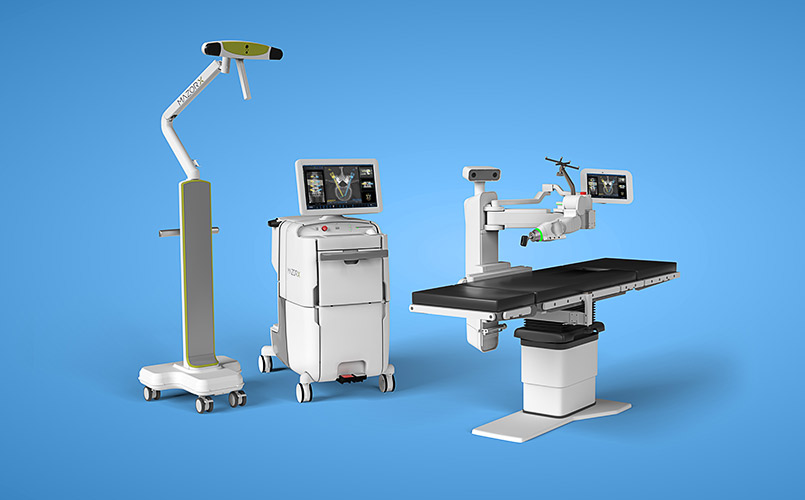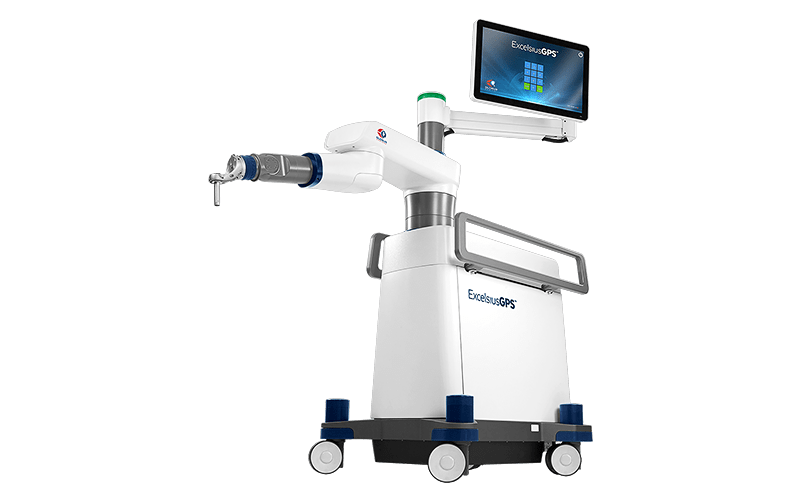Spine Surgery with Robotic Guidance
Your spine anatomy is what enables your posture, alignment and movement. In treating patients with spinal disorders, the spine surgeons at University Hospitals Spine Institute utilize a number of advanced technologies, including robotic guidance to visualize and perform surgical corrections tailored to the nuances of your individual spine anatomy.
Your health is important. Get expert care.
Offering in-person and virtual visits. Call 216-859-6329 today to see which option is right for you.
Make an AppointmentLearn more about pediatric orthopedics
Understanding Robotic Guidance Technology & Robotically Assisted Surgery
Understanding how surgical robotic guidance technology works and why it’s used helps patients work in partnership with their physician and surgeon to make informed decisions about medical care.

Mazor X Stealth™ Edition Robotic Guidance System
Our adult and pediatric surgeons strive to provide the best, safest surgical care. That’s why our team uses the Mazor X Stealth™ Edition Robotic Guidance System, a technology that assists with precision and predictability in surgical procedures. Comprising a computer, specialized software and specialized instrumentation, the system allows our surgeons to plan where and how they will operate on your spine. During Mazor X-guided robotic spine surgery, an automated robotic “arm” holds key surgical instrumentation in place for the surgeon. The robotic guidance helps your surgeon execute their plan and perform the surgery with optimal precision.

ExcelsiusGPS Robotic-Assisted Spine Surgery
If you have back or leg pain that is unresponsive to nonsurgical treatment, you may be eligible for minimally invasive spine surgery with ExcelsiusGPS – a robotic-assisted surgery navigation platform combining a rigid robotic arm and full navigation capabilities. ExcelsiusGPS optimizes surgical accuracy and patient care by integrating advanced robotics with navigation technology similar to that found in your car’s global positioning system (GPS).
Locations
University Hospitals offer ExcelsiusGPS robotic-assisted spine surgery at:
University Hospitals Cleveland Medical Center
11100 Euclid Ave. Cleveland, OH 44106
Adult Providers
Pediatric Providers
Robotic-Assisted Pediatric Spine Surgery
The pediatric orthopedic surgeons at UH Rainbow Babies & Children’s are using the Mazor X and ExcelsiusGPS robotic-assisted spine surgery platforms to optimize the safety, efficiency and outcomes of pediatric spine surgery.


